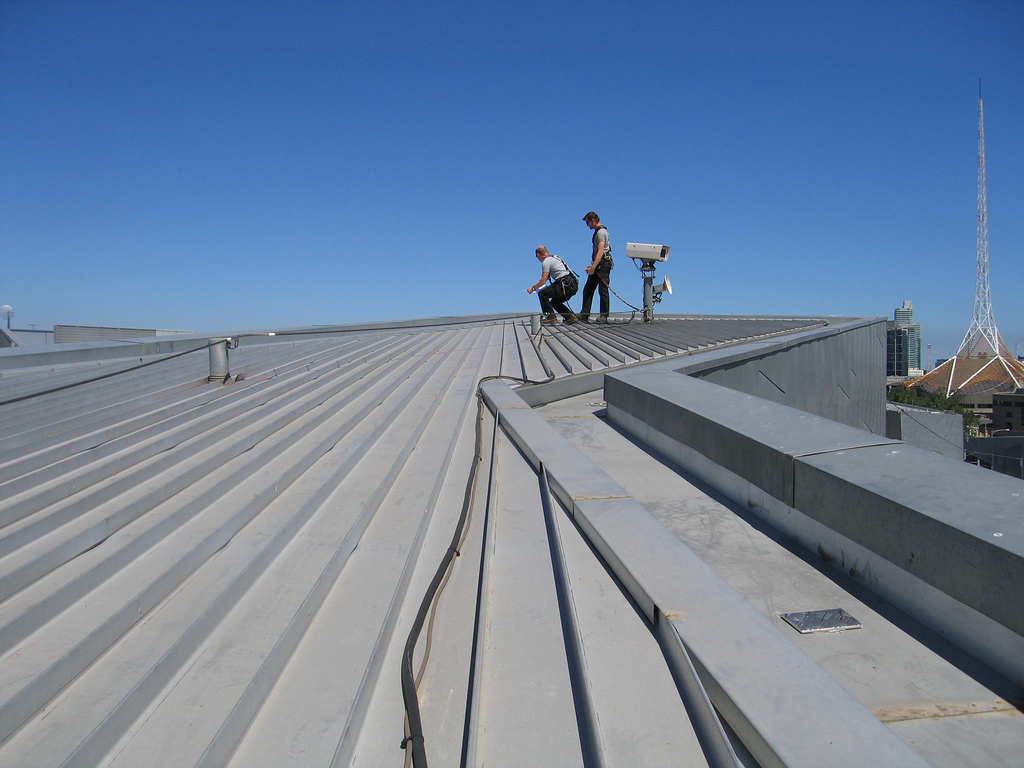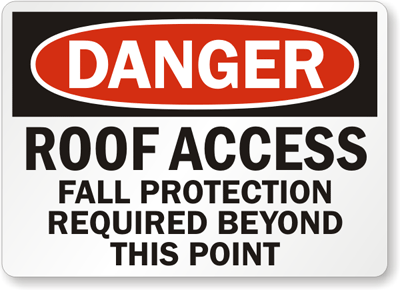Your summertime roof safety reminder
As high temperatures push people to the highest points in their homes or workplaces (whether or not they have legal access) it’s important to keep safety in mind. For most parts of the country, the warmer months are also roofing season, making roof safety an even higher priority.

In the nicer months, revelers enjoy rooftop views. From Irene Perino.
Fall Protection
For construction workers, fall protection is the first, and perhaps most important safety measure. Each year, workers are injured falling from roofs and ladders. To avoid such accidents, always wear a safety harness with a lanyard anchored to a secure point. This way, if you do slip, you won’t fall off the roof.
In particularly precarious situations, consider utilizing a rope or cable lifeline system or even nets and guardrails. According to OSHA guidelines, workers on low-slope roofs must be protected from falling by guardrail systems, safety net systems, personal fall arrest systems or a combination of any of these long with a warning line system. Those working on steep roofs should use guardrail systems with toe boards, safety net systems, or personal fall arrest systems.
Avoid Slipping
Once you have fall protection in place, consider ways to avoid slipping all together. Never work on a wet roof, wear safe footwear (boots with soft soles give the best traction), and keep the work area clear of tools and debris.

These workers wear safety harnesses as they survey the roof. From Paul Lim.
Ladder Safety
Use ladders that have been approved by OSHA, and never opt for a damaged or makeshift ladder. Be sure to set it up properly, placing the ladder on solid, level footing. Tie the ladder off at the top or secure it with a plywood brace, and set it against solid backing. When set up, the ladder should extend 36 inches above the roof landing in order to provide a secure location to grab when moving from roof to ladder.
Ladder placement is also extremely important. Keep metal ladders away from electrical wires and boxes. When not in use, remove ladders from the work area and lock them together on the ground so that they are not misused by someone who could get hurt.
Electrical Safety
A number of roofers are injured in accidents involving electricity, but it’s important that those using the roof for recreation pay attention to electrical wires as well.
Never touch wires with your hands or tools, especially tools made of metal. Remember, electricity can jump from a wire to a metal ladder several feet away, so it’s best to use wooden or fiberglass ladders when working on a roof near wires. And if you must work (or play) near electrical wires, consider calling the power company first. They can inspect the wires and insulate them if necessary.

OSHA requires fall protection for roofs without walls. From MySafetySign.
Staying Safe
As always, wear the appropriate PPE. This includes hard hats, knee pads, safety glasses, fasteners and wood grips. And whenever you’re on a roof, whether it’s for work or recreation, stay alert. Avoid skylights and other weak areas. Being completely aware of your surroundings is the key to staying safe.
Category: Construction, Safety Tips














